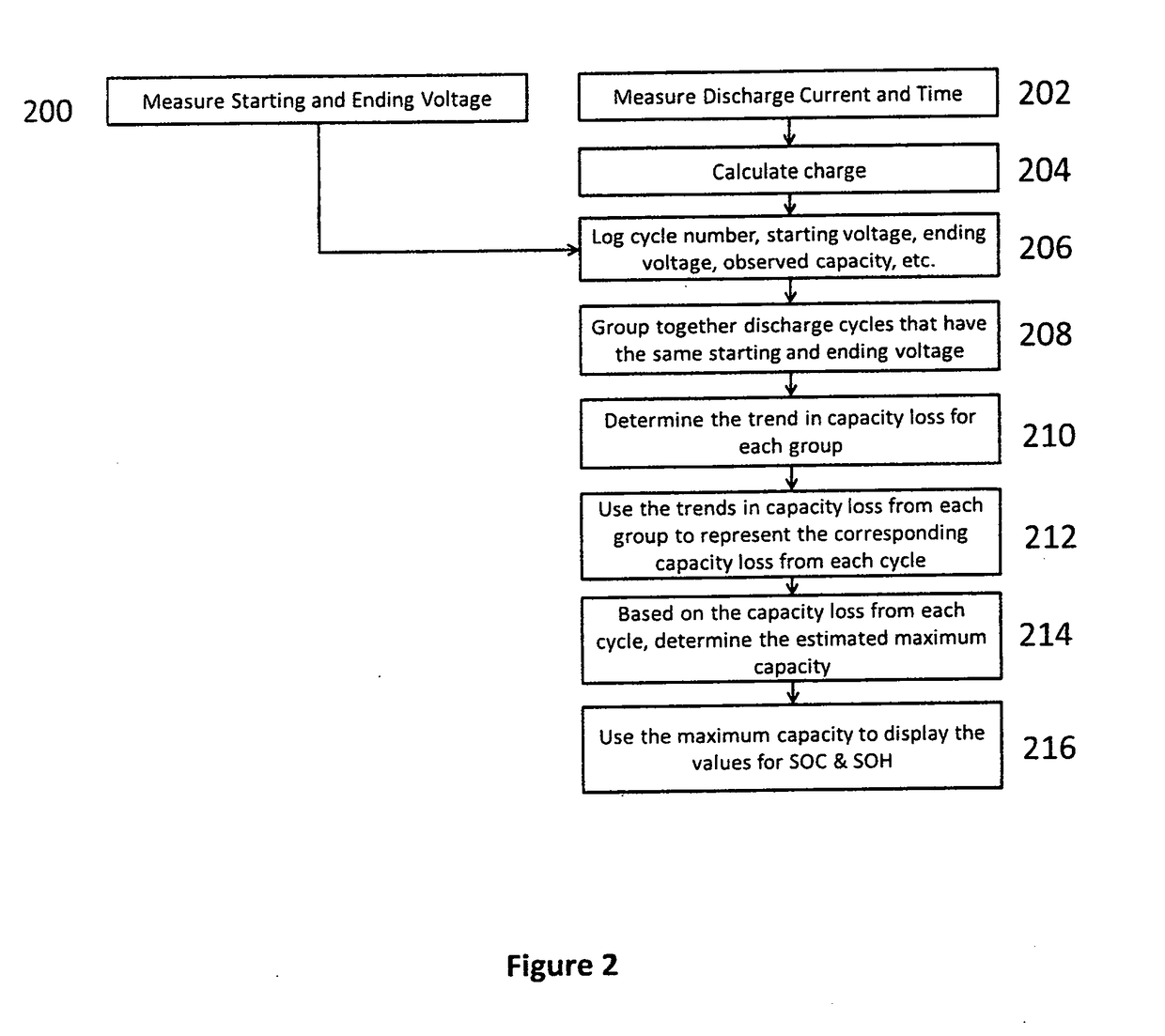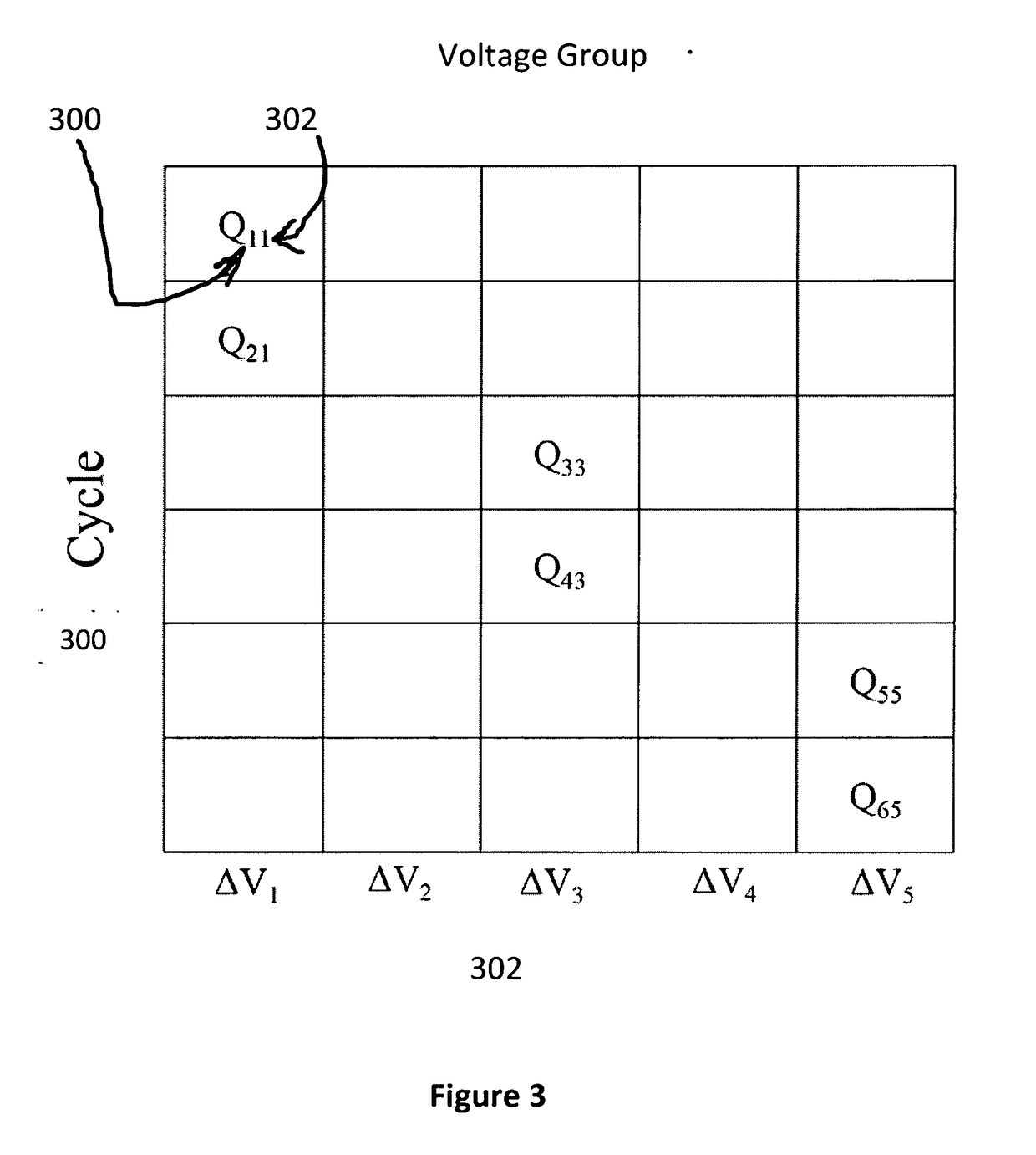Maximum capacity estimator for battery state of health and state of charge determinations
a technology of maximum capacity and estimator, which is applied in the field of determining battery capacity, can solve the problems of li-ion battery reliability being often called into question, and affecting the accuracy of soc estimation
- Summary
- Abstract
- Description
- Claims
- Application Information
AI Technical Summary
Benefits of technology
Problems solved by technology
Method used
Image
Examples
Embodiment Construction
[0024]A general example of the embodiments of the invention is described below with reference to the accompanying drawings. The invention is not limited to the construction set forth and may take on many forms embodied as both hardware and / or software. The invention may be embodied as an apparatus, a system, a method, or a computer program. The numbers are used to refer to elements in the drawings. In many cases these elements are shown to be coupled, which may refer to a direct physical connection between the elements in which data or power or information may be shared, or it may refer to a software computing process which requires information from one sequence to be fed into a following sequence. It is also understood that in any such coupling, there may be other elements in between such connections that may include, but are not limited to, power scaling or signal modulation devices.
[0025]As stated above, the health of a battery-operated system is often quantified by the amount of...
PUM
 Login to View More
Login to View More Abstract
Description
Claims
Application Information
 Login to View More
Login to View More - R&D
- Intellectual Property
- Life Sciences
- Materials
- Tech Scout
- Unparalleled Data Quality
- Higher Quality Content
- 60% Fewer Hallucinations
Browse by: Latest US Patents, China's latest patents, Technical Efficacy Thesaurus, Application Domain, Technology Topic, Popular Technical Reports.
© 2025 PatSnap. All rights reserved.Legal|Privacy policy|Modern Slavery Act Transparency Statement|Sitemap|About US| Contact US: help@patsnap.com



